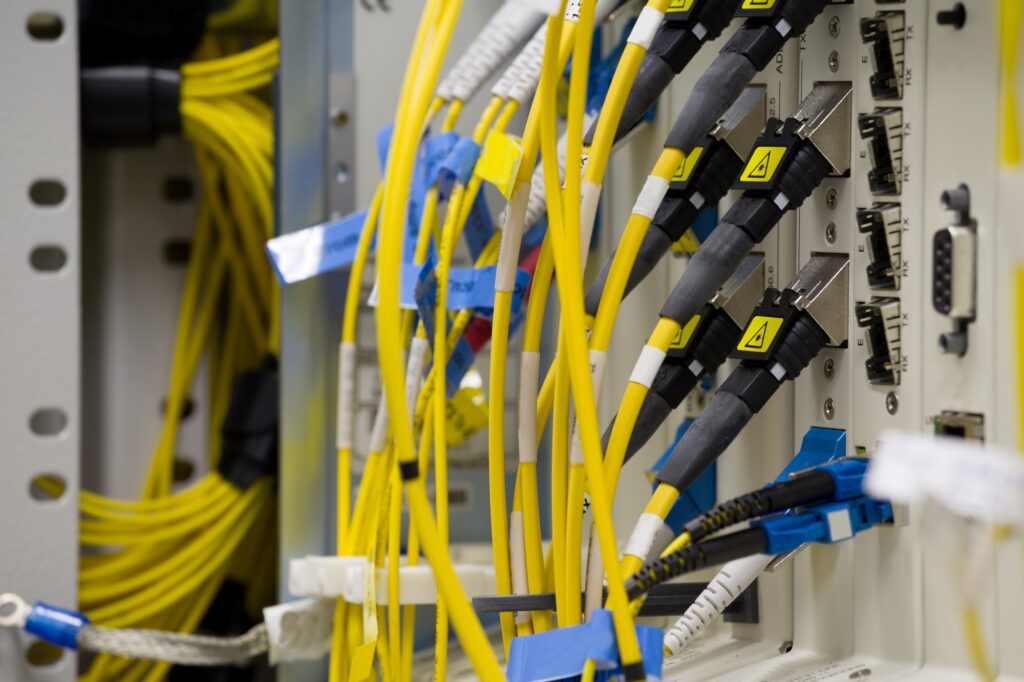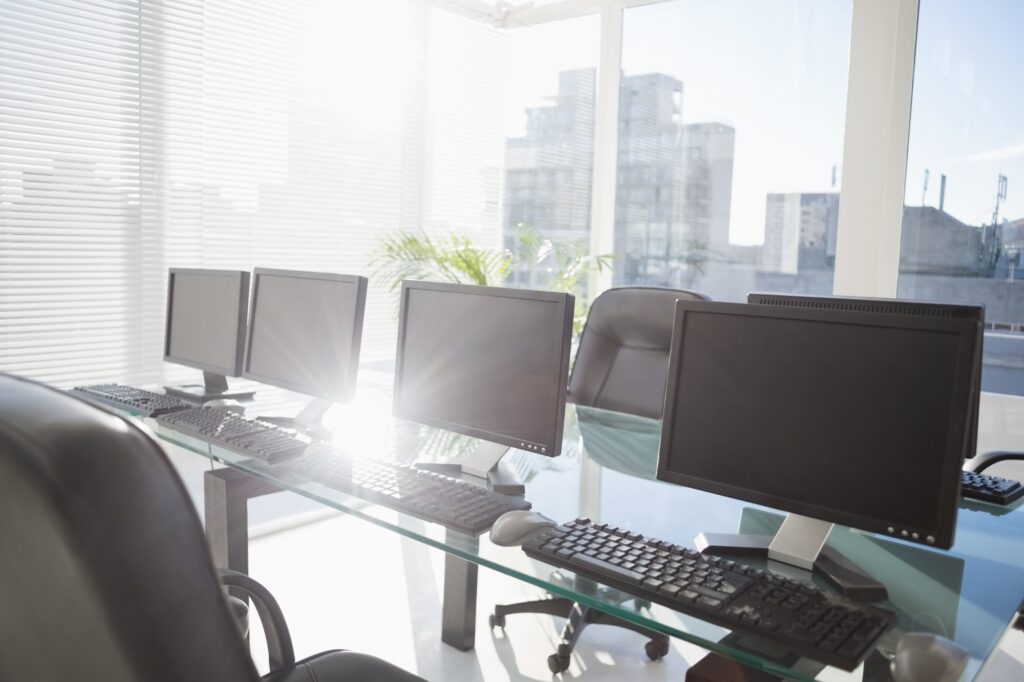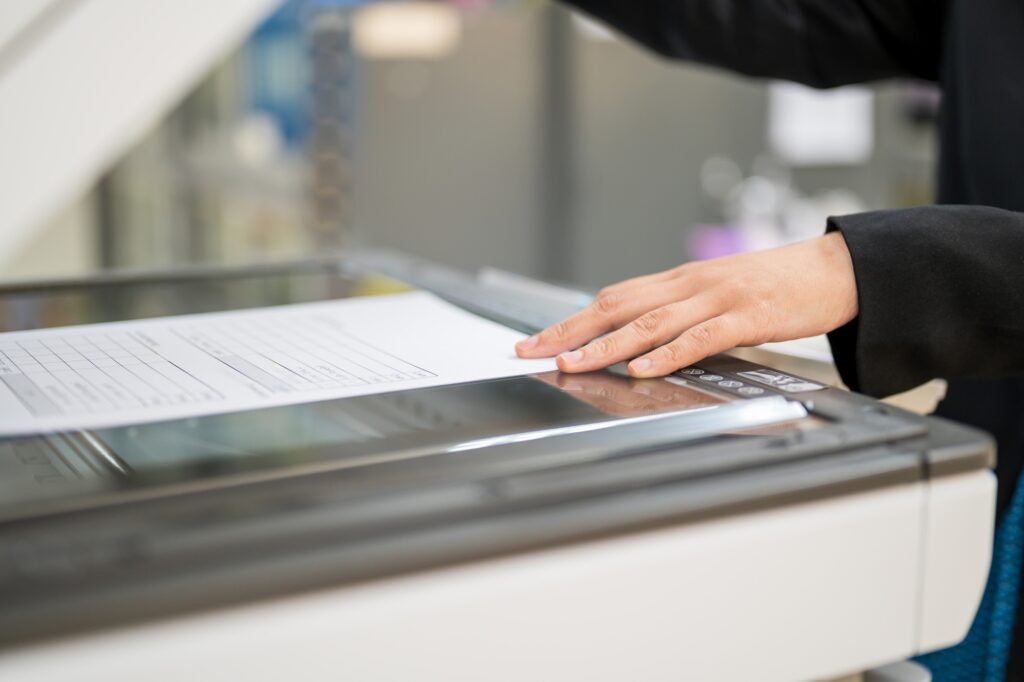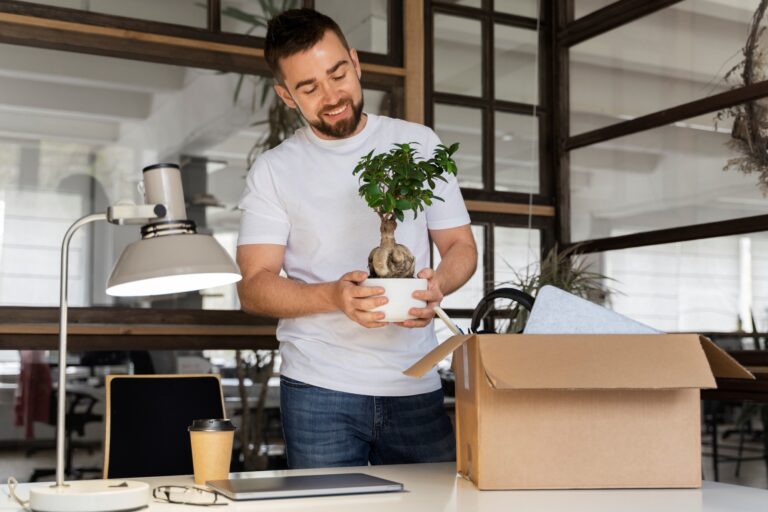Packing office IT equipment and electronics can be challenging, especially when ensuring that all devices are transported safely and securely. Our comprehensive step-by-step guide on how to pack office IT equipment and electronics simplifies the process for you. Learn how to gather the right packing supplies, such as sturdy boxes and bubble wrap, protect your devices from potential damage, and ensure a smooth and efficient move to your new location without any hassle.
Key Takeaways
- Gather essential packing supplies such as sturdy boxes, anti-static materials, and bubble wrap to protect electronics during the move.
- Back up all important data before packing devices to prevent loss and ensure data accessibility while transitioning to the new office.
- Carefully label cables and photograph connections to simplify the unpacking process and aid in reassembly at the new location.
Gather Your Packing Supplies
Before you start packing, gather all the necessary packing supplies. The right packing material will streamline the packing process and secure your equipment. Sturdy boxes, bubble wrap, packing peanuts, anti-static packing materials, and strong packing tape are all necessary. These items prevent damage during transit.
Anti-static packing materials are crucial for sensitive electronics. They help prevent static electricity from damaging your devices. Ensure you have everything you need for packing electronics safely and pack electronics to avoid last-minute store runs.
Back Up Important Data
Back up all important data before packing your electronic devices. This step protects against data loss during the move. Use cloud storage or an external hard drive to keep your data safe and accessible. Cloud storage is useful as it allows access from anywhere, invaluable during the transition.
Backing up your data secures it against potential damage and provides peace of mind. Knowing your important information is still safe, even if devices are damaged, provides great relief.
Preparing Electronic Devices for Packing
First, remove all batteries from all your electronics. Then, take out any cartridges and discs. This prevents leakage and damage during transport.
Use zip ties to secure all cables. This prevents them from tangling. Place loose items like batteries, chargers, and cables in labelled sealable bags for organisation. Coiling cables and securing them with ties or bands ensures they stay untangled during transport.
These small steps not only save time but also reduce frustration when unpacking and setting up your new office. By keeping everything organised and easily accessible, you’ll ensure a seamless transition into your new workspace.
Labelling and Photographing Cables
Labelling and photographing cables helps avoid confusion during unpacking. Label each cable with colourful sticky labels to match them with their respective devices. This practice prevents stress when setting up your equipment.
Photographing connected cables serves as a visual reference for easier reconnection. Before unplugging cords, take photos of the back of each device. This helps you remember where everything is connected. These photos will guide you when reassembling your setup in the new office.

Disconnecting and Disassembling Equipment
Properly disconnecting and disassembling your electronic equipment avoids damage. Unplug devices at least 24 hours before packing to minimise risks. Follow documented steps for safe disassembly, paying close attention to detachable parts. This careful approach protects your equipment during the move.
Safely disconnecting and disassembling your devices readies them for packing and reduces damage risk. Proper organisation and documentation save time and prevent mistakes.
Packing Desktop Computers and Laptops
Packing desktop computers and laptops requires special attention for safe transport. Using the original packaging is ideal, but if unavailable, sturdy boxes with sufficient packing paper padding and protective packaging will work. This section will be divided into protecting computer towers and securing laptops, providing detailed steps for each.
Protecting Computer Towers
Use a rigid cardboard box at least 10 cm larger on all sides than the tower for adequate cushioning space. Fill the box with bubble wrap or foam, avoid newspaper or shredded paper, for better protection.
Wrap the hard drive with 3-4 inches of bubble packaging. This ensures necessary protection during transport. Clearly label the box contents and mark it as FRAGILE for careful handling. This informs handlers to take extra precautions.
Securing Laptops
Start by placing laptops in protective sleeves to prevent damage. Then, pack them into slightly larger separate boxes. Fill any extra space with cushioning materials for added protection. Secure packing protects laptops from bumps and jolts during transit. This careful packing process ensures laptops are packed securely, arrive undamaged, and in perfect working order.
Packing Small Electronics and Accessories
Packing small electronics and accessories requires attention to detail. Use sealable bags for smaller items like mobile phones and accessories. Store items in appropriately sized boxes to prevent movement. Fill empty space with packing peanuts or similar materials to keep items secure.
Seal each box tightly with strong packing tape. This attention to detail protects small electronics and accessories during the move.
Packing Large Electronics
For large electronics like printers, use suitable-sized boxes and transport them upright. Mark boxes containing electronics as fragile to indicate their delicate nature. Wrap laptops in bubble wrap with at least 5 cm padding on every side before boxing.
Fill any extra space with cushioning materials to prevent movement during transit. This careful packing ensures large electronics are well-protected during the move.
Special Care for Flat Screen TVs
Flat-screen TVs need special care during packing. Use original boxes or custom-made crates for transport. If the original box isn’t available, create a DIY box or use custom-built crates. Pack flat-screen TVs upright using foam protectors, and include the remote and power cord in the same box.
Protecting Against Static Electricity
Static electricity can damage electronics. Damage can occur with as little as 30 volts of static electricity. Use anti-static packaging materials to protect against this. Options include bags, tubes, and stretch film. Antistatic bubble wrap protects sensitive electronics by eliminating electrostatic charges.
This bubble wrap is strong, lightweight, and recyclable, ideal for packaging electronics. These precautions protect your electronics from potential static damage.
Ensuring Protection from Temperature Extremes
Extreme temperatures can harm electronic devices. Protect against this by using insulated packing materials and avoiding direct sunlight. Phase change materials maintain stable temperatures by absorbing or releasing heat.
Reflective films divert external heat, offering additional protection against temperature fluctuations. Proper thermal packaging design ensures effective insulation and strategic temperature control placement.

Unpacking and Setting Up in Your New Office in Hammersmith
At your new office in Hammersmith, unpack electronic equipment in designated areas. Store cables with their corresponding devices for easy organisation and retrieval. Clearly label each box with the item’s name or designated room for easy organisation.
Test devices as you unpack and let them reach room temperature before reassembling. Keep all packing materials until everything is set up. This careful approach ensures a smooth transition and efficient setup in your new space.
Additional Tips for Moving Office Electronics
Perform a shake test on packed boxes to identify any loose items that may cause damage. Secure movable components in electronics while packing to prevent damage. This prevents damage during transit. Avoid stacking heavy boxes on electronic items. This helps prevent crushing and damage.
Professional movers can provide additional protection and ease during relocation. If you want to ensure a smooth process, consider hiring professional movers. These tips can make the move smoother and more efficient, reducing the risk of damage to your electronics.
Summary
Moving your office electronics to Hammersmith can be stress-free with the right approach. By adhering to these expert tips, you can ensure that your equipment is transported securely and is ready for immediate use in your new office. Effective planning, meticulous packing, and attention to detail are crucial for a seamless transition. Here’s to a smooth and successful relocation!
Frequently Asked Questions
Why is it important to label and photograph cables before packing?
Labelling and photographing cables is essential to ensure correct matching with devices during packing and assembly, thus preventing confusion and potential errors. This practice streamlines the setup process and enhances overall efficiency.
What to do if the original packaging for electronics is unavailable?
If the original packaging is missing, it’s essential to use sturdy boxes with ample padding like bubble wrap or foam to ensure their protection during transport. This will help prevent damage and ensure safe handling.
How to protect electronics from static electricity during the move?
To protect electronics from static electricity during a move, utilise anti-static packaging materials such as bags and tubes. This will help ensure devices remain safe and functional.
What steps to take to back up important data before moving?
To effectively back up important data before moving, utilise cloud storage or an external hard drive to securely store all files, ensuring they remain safe and accessible during the transition.
How to handle packing flat-screen TVs?
To ensure the safe transport of flat-screen TVs, always use the original packaging or a custom crate, and keep the TV packed upright with foam protectors for added security. This will help prevent damage during transit.







